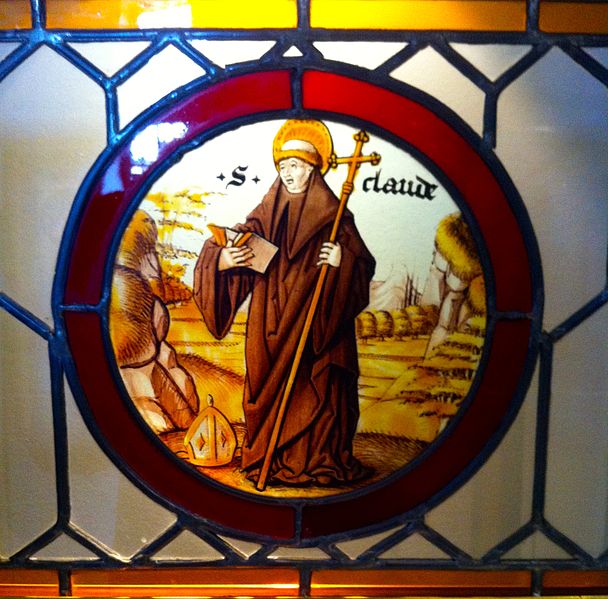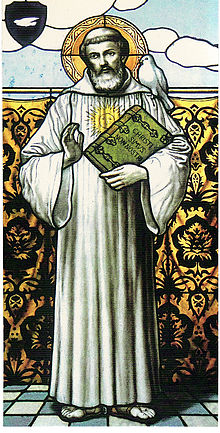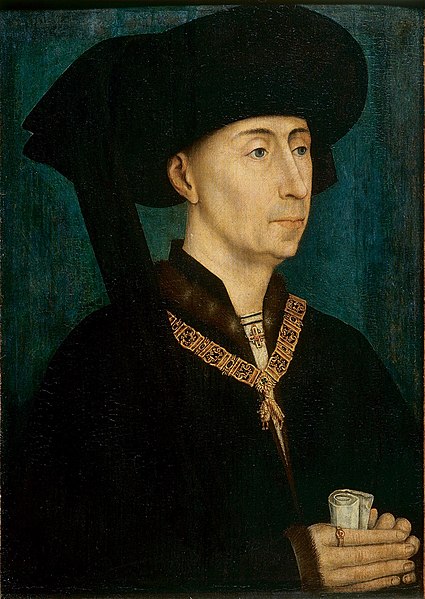Saint Claudius
Saint Claudius, born in Salins (in the Jura) around 607 and died in 699 in the monastery of Condat (which is now Saint-Claude abbey), is a bishop of Besançon and a saint of the 7th century, a very important religious figure of the region. He was the son of the governor of the city of Besançon. Around the age of twenty, he left the land army to join the holy militia of Christ, and was received among the Clerics of the chapter of the cathedral of Besançon, who lived, just as in a monastery, by following the rule that had just written their Bishop, Saint Donatus. By his zeal Saint Claude quickly became the model of the other clerics and was charged by the Bishop to teach in the school of the cathedral. After twelve years of ascetic life in the chapter, he became a monk at the Monastery of Condat, then called Saint-Oyend, formerly founded by Saint Romain who was, with Luxeuil, one of the most renowned monasteries of that time. In the twelfth century, his incorrupt body was discovered and miracles began to abound with his relics, which for centuries became the object of a very famous pilgrimage.

Saint Colombanus

Colombanus (540 – 615) was an Irish missionary notable for founding a number of monasteries after 590 in the Frankish and Lombard kingdoms, most notably Luxeuil Abbey in present-day France and Bobbio Abbey in present-day Italy. In 590 Columbanus and his companions were welcomed by King Guntram of Burgundy, who granted them land at Anegray, where they converted a ruined Roman fortress into a school. Despite its remote location in the Vosges Mountains, the school rapidly attracted so many students that they moved to a new site at Luxeuil and then established a second school at Fontaines. These schools remained under Columbanus’ authority, and their rules of life reflected the Celtic tradition in which he had been educated. ensions arose in 603 CE when St. Columbanus and his followers argued with Frankish bishops over the exact date of Easter. Columbanus appealed directly to Pope Gregory I[1]. In the third and only surviving letter, he asks “the holy Pope, his Father” to provide “the strong support of his authority” and to render a “verdict of his favour”. None of the letters were answered, most likely due to the pope’s death in 604. He then left for Italy to continue preaching.
Otto IV of Burgundy
Otto IV of Burgundy or Otto IV according to the sources (1240 – 1303), is count palatine of Burgundy and count of Artois by marriage with the countess Mahaut of Artois. He was the last count of Burgundy from the house of Ivrea before the county was attached by marriage and filiation of his two daughters to the kingdom of France and then to the duchy of Burgundy. Despite the extent of this territory, its possessions are only the backbone of a state and Otton was far from completely dominating the county. The real owners of the fiefdoms that constituted the town hall and the viscounty of Besançon were the archbishops who held them directly from the Empire. Filled with bitterness and resentment by a series of increasingly serious failures, overwhelmed with debts, he signed the Treaty of Vincennes and left to Philippe the Fair the care of governing the county of Burgundy. Through this alliance, Othon IV gave the kingdom of France its first claim at controlling the territory of Franche-Comté.
- [1]Edmonds, Columba. “St. Columbanus.” The Catholic Encyclopedia. Vol. 4. New York: Robert Appleton Company, 1908
Philipp III the Good

Philip III (31 July 1396 – 15 June 1467) was Duke of Burgundy from 1419 until his death. He was a member of a cadet line of the Valois dynasty, to which all 15th-century kings of France belonged. By a strong interventionist policy, Philippe the Good is the first prince to politically unite the region of the historic Netherlands (the Seventeen Provinces), including in particular in the Burgundian State the imperial provinces of Namur, Hainaut, Holland , Zeeland, Brabant, Limburg, Luxembourg and Antwerp. During his reign, the Burgundian State reached the apex of its prosperity and prestige, and became a leading centre of the arts. His territorial aquisitions were numerous, ranging from the city of Luxembourg to the county of Namur. True founder of the Duchy of Burgundy, Philippe the Good left at his death a powerful state that rivaled the kingdom of France in the 15th century.